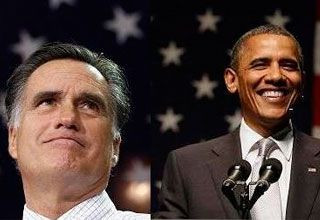Presidential Election 2012: What To Look For In Pennsylvania

Pennsylvania has voted Democratic for the last five presidential elections in a row, but that doesn’t mean President Barack Obama and his Republican challenger Mitt Romney aren’t fighting tooth and nail for the swing state’s 20 electoral votes.
If anything, Pennsylvania is more crucial for Obama because it could show where he stands with white, working class voters, a demographic that polling suggests is far more likely to lean toward Romney. Although Obama enjoyed a wide lead in the state for most of the campaign season, it began to dip after October’s presidential debates. A Real Clear Politics analysis of polling data shows Obama with less than a four-point lead in the days leading up the election – and that’s far more favorable for the president than other surveys. A Nov. 3 poll from the Pittsburgh Tribune-Review showed the race tied at 47 percent for either candidate in the campaign’s final week.
Obama may have won the state with a solid 10-point margin in 2008, but all signs point to a narrower victory – if any – for the president in 2012. Pennsylvania’s urban, suburban and rural voters usually give winners far slimmer victories; for instance, John Kerry barely won by 2.5 percentage points in 2004, while Al Gore won by 4.2 points in 2000.
Keystone State voters have also been hit hard by the nation’s sluggish economy, which could be a motivator for some blue collar Democrats to switch party lines this year. Pennsylvania’s unemployment rate surpassed the national average in September, when it hit 8.2 percent after remaining below average throughout the recession.
According to the National Review, in Luzerne County – where Obama won by 8 points four years ago– Republican and independent voter registrations have jumped since 2008. Cambria County and Lancaster County – both of which strongly supported Republican Sen. Pat Toomey in 2010 – are also expected to go to Romney this year.
Christopher Borick, a professor of political science at Muhlenberg College, said in an email that the one county to watch on Election Day is Northampton County, an industrially-oriented region specializing in coal and cement production.
“Northampton has a perfect mix of urban, suburban and rural areas that closely mirror the state as a whole. Its voter registration split is also very much like the state, along with its turnout patterns,” he said.
In recent decades, the winners of statewide races in Pennsylvania have almost always carried Northampton County.
© Copyright IBTimes 2024. All rights reserved.




















